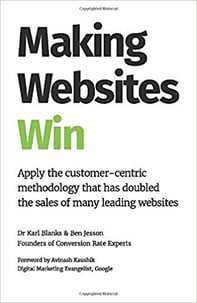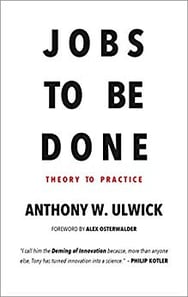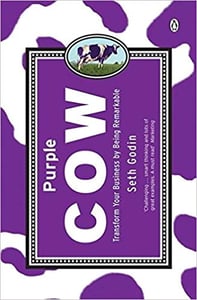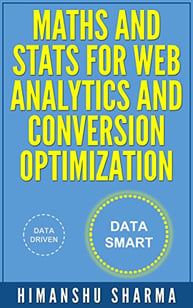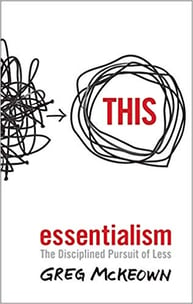8 books about Growth-Driven Design that make all the difference
Digital Transformation
Website Development

A new year has just begun and everyone is motivated for change and list-making! As you add to the reading list you are determined to finish this year, consider setting aside a portion just for Growth-Driven Design (GDD). Since your website is your number one marketing asset and using the latest and most effective methods to make changes to it (or build it from scratch) is vital, we’ve compiled a list of books that we love and will really push your Growth-Driven Design strategy on to the next level. These should definitely be the next books going on your reading list for 2020!
Not sure what GDD is yet? Check out our blog on how your website can take your marketing game to the next level with Growth Driven Design.
Our 8 favourite books to help with Growth-Driven Design:
Scrum: The Art of Doing Twice the Work in Half the Time
Jeff Sutherland
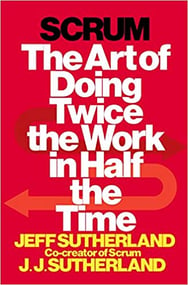
Growth-Driven Design is closely linked with agile working and project management. The creators of the GDD methodology even go so far as to describe it as a direct cross between Agile and Lean principles. This means that understanding the Scrum framework allows for a solid platform from which to understand Growth-Driven Design. This book is a personal favourite of, Jon, our Managing Director. He knows how important it is to embrace the Scrum process, particularly when working on web development projects.
Making Websites Win
Dr Karl Blanks & Ben Jesson
This book has been a hugely popular topic of discussion around our lunch table this year. Our name may have been a giveaway, but we love putting our clients and customers at the heart of our work. So when we came across a book about getting more from our website with a customer-centric view, we were hooked. Blanks and Jesson have done a great job of taking conventional web dev knowledge and spinning it into something new by looking through the customer lens. A truly Growth-Driven Design approach!
(Added bonus: the authors donate all of the profits from this book to a charity that addresses global childhood hunger!)
Jobs to be Done
Anthony W. Ulwick
Job theory is an innovation process that puts customer need at the forefront of strategy and planning. This book is an in-depth look into the theory that suggests that all people have an underlying need that they are looking for help to address. With his process called Outcome-Driven Innovation, Ulwick has been helping companies understand their customer needs and innovate with intention for decades. When it comes to GDD, outcomes and growth go hand-in-hand, so these two processes are an absolute match!
When Coffee and Kale Compete
Alan Klement

If the blurb about the last book got you interested in jobs theory, but you’re not ready to commit to the in-depth view, definitely start here with Alan Klement’s easy-to-read and straight-talking introduction to jobs to be done. While you won’t get everything you need about implementation and processes, we feel it’s a great place to dip your toe in. It’s widely regarded as an enjoyable read and an authoritative introduction. We recommend starting here before moving on to Jobs to be Done. This book is also conveniently available for free as a PDF download from the website.
You Should Test That
Chris Goward
Another brief read, Goward’s You Should Test That is most helpful for the continuous improvement portion of Growth-Driven Design. This book is an inspirational look into both why and how to make iterative improvements on your website. This is for beginners in performance testing, but it is an enthusiastic introduction to coming up with tests that actually tell you the information that will help you optimise for conversion. Optimisation is a pinnacle of GDD, so we absolutely suggest taking the time to think through your testing strategy.
Purple Cow
Seth Godin
As with most of Seth Godin’s work, Purple Cow is about thinking and strategy. This muses on why traditional marketing is failing and what that means for businesses going forward. Godin proposes that the only way forward is to make your business remarkable. As remarkable, even, as a purple cow, hence the title. If you’re looking for a how-to guide, then this is not the book for you. Rather than weigh it down with practical applications and processes, Godin has focused on driving home the concept of the remarkable vs. unremarkable. From this book, take the idea of standing out to your Growth-Driven Design strategy and watch your new website succeed!
Maths and Stats for Web Analytics and Conversion Optimization
Himanshu Sharma
This is a guide to help digital marketers understand how statistics and data are used for web analytics. With data being the driving force behind GDD, getting a deeper understanding of how it works can be indispensable. Maths and Stats takes the sometimes murky world of marketing analytics and simplifies it, noting which metrics are useful and which metrics are not. Growth-Driven Design only works when there is enough understanding of the available data to make iterative improvements, so Sharma’s look into maths for marketers is paramount to a good GDD strategy.
Essentialism: The Disciplined Pursuit of Less
Greg McKeown
Essentialism may seem like an odd addition to a list about a web development framework, but trust us when we say, this book is essential. Growth-Driven Design is unique because of its approach to building a website. It all starts with a ‘launchpad’ site that is boiled down to only the most necessary and vital pieces of a website. Sites that are hundreds and hundreds of pages get reduced down to maybe a dozen. Which sounds terrifying, of course! But nothing important is lost. They’re built to be functional and have all of the necessary pieces. McKeown’s book talks about how to recognise and prioritise what is most essential. While the book may be created for life advice, this principle is absolutely key to GDD.
If you’re not lucky enough to have an amazing Web Dev team on hand that really understands Growth-Driven Design and how it benefits your business, these books are a great starting point. And if you need more support than that, we’re always up for a chat!
